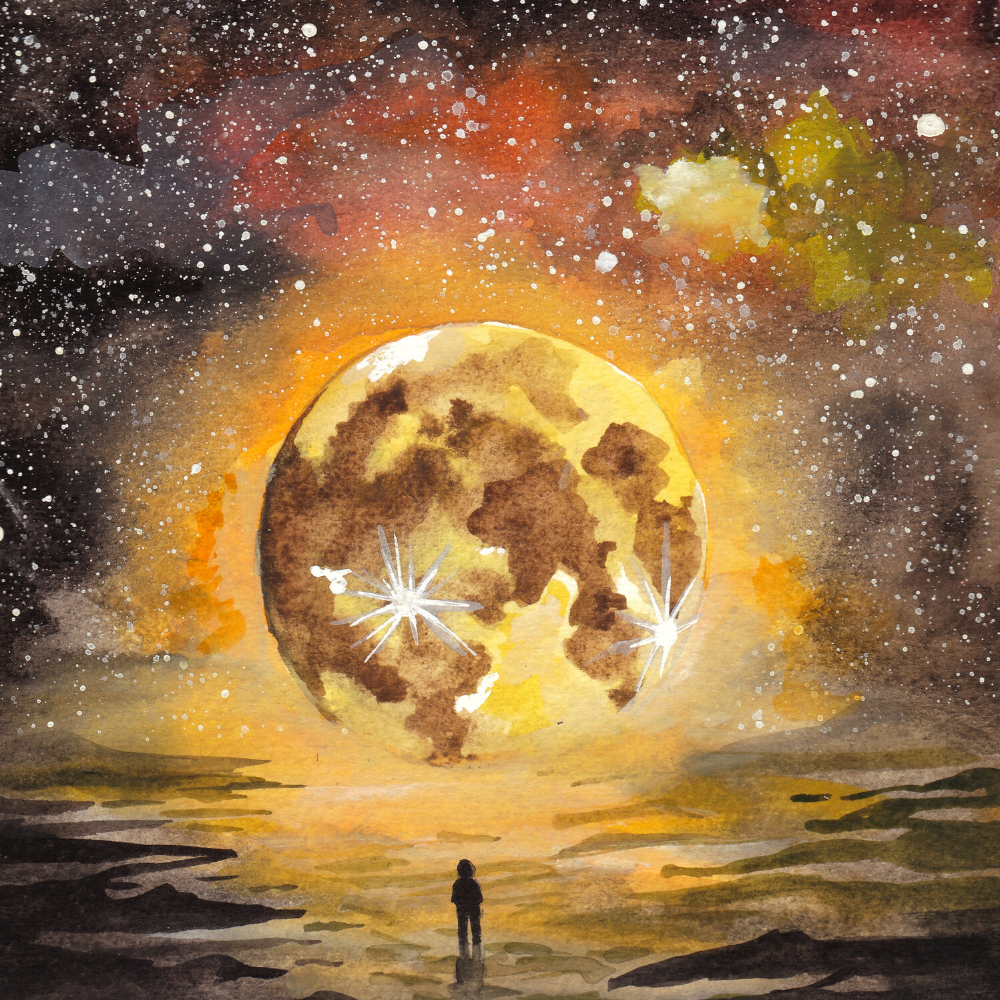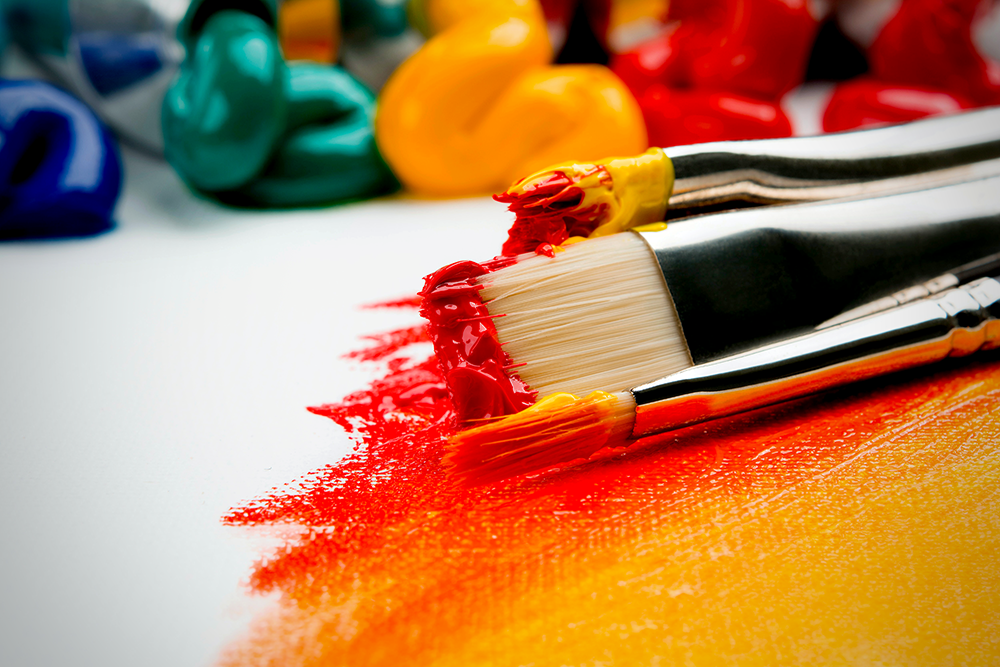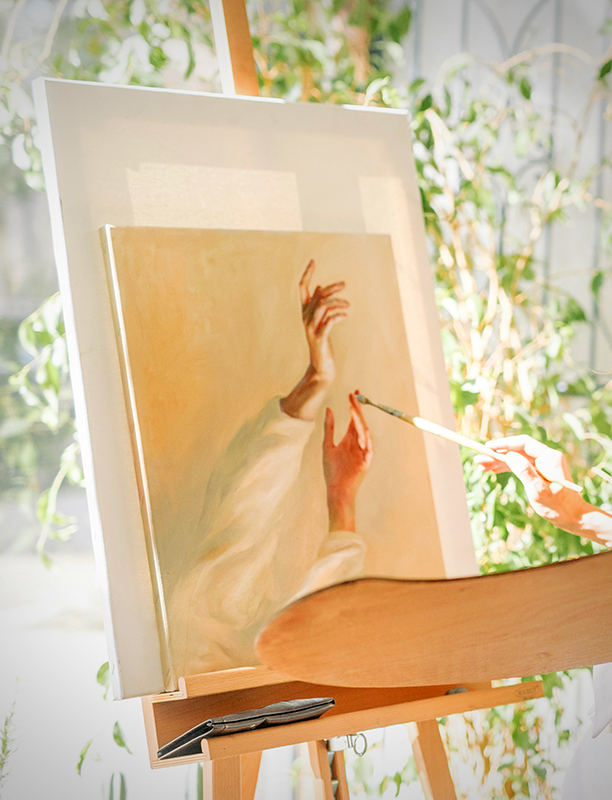Embarking on a painting journey can be both exciting and intimidating, especially for beginners.
But fear not! We're here to answer the burning question: "What is the easiest thing to paint?"
This guide is packed with simple yet inspiring painting ideas and practical tips to help you kickstart your artistic adventure.
Get ready to unleash your creativity and find joy in every brushstroke!
Key Takeaways:
- Abstract painting is often the easiest starting point for beginner artists.
- Simple subjects like clouds, flowers, and night skies are great for practice.
- Using the right art supplies and techniques can significantly improve your painting skills.



Easy Painting Ideas: Keeping It Simple
When starting, it's essential to keep your painting ideas simple.
Choose subjects that are easy to paint and don't require a lot of detail.
This approach will help you build confidence and develop your skills without feeling overwhelmed.
Some easy painting ideas include abstract designs, simple landscapes, and basic still life compositions.
As you become more comfortable with your painting skills, you can gradually take on more complex subjects and techniques.
Abstract Painting: The Perfect Starting Point
Abstract painting is an excellent entry point for beginners.
It allows you to experiment with colors, shapes, and textures without the pressure of creating a realistic image, such as acrylic pour paintings.
This freedom can help you build confidence and develop your unique style.
To get started with abstract painting, gather your art supplies, including acrylic paints, paint brushes, and canvases.
Choose your favorite colors and let your imagination run wild.
There are no rules in abstract painting, making it a fun and stress-free way to practice painting.
Painting Clouds: A Simple Yet Beautiful Subject
Clouds are a fantastic subject for beginner painters.
They are relatively easy to paint and can add depth and interest to your artwork.
To paint clouds, start with a light background color and use a flat brush to create soft, fluffy shapes.
Experiment with different shades of white, gray, and blue to add depth and dimension to your clouds.
You can also use a bit of black paint to create shadows and make your clouds look more realistic.
With practice, you'll be able to paint clouds that look like they belong in a Van Gogh masterpiece.
Flowers: A Timeless and Easy Subject
Flowers are another easy subject for beginner painters.
They come in various shapes, sizes, and colors, making them a versatile and enjoyable subject to paint.
Start with simple flowers like daisies or tulips, and gradually work your way up to more complex blooms.
To paint flowers, use a combination of light and dark colors to create depth and dimension.
Experiment with different brush strokes and techniques to capture the unique texture of each flower.
With practice, you'll be able to create beautiful floral paintings that you can proudly hang on your wall.



Night Sky: A Captivating and Easy Scene
The night sky is a captivating subject that is relatively easy to paint.
To create a stunning night sky, start with a dark background color, such as black or deep blue.
Use a flat brush to blend different shades of blue and purple to create a gradient effect.
Add stars by flicking white paint onto the canvas with a small brush or toothbrush.
You can also paint a moon or other celestial objects to add interest to your night sky.
This simple yet beautiful scene is perfect for beginner painters looking to practice their skills.
Everyday Life: Inspiration in Simple Things
Everyday life can provide endless inspiration for easy painting ideas.
Look around your home or neighborhood for simple subjects to paint, such as a bowl of fruit, a vase of flowers, or a scenic view from your window.
These everyday subjects can help you practice your painting skills and develop your unique style.
Use a variety of colors and techniques to capture the essence of each scene.
With practice, you'll be able to create beautiful paintings that reflect the beauty of everyday life.
Using Acrylic Paints: A Beginner's Best Friend
Acrylic paints are an excellent choice for beginner painters.
They are easy to use, quick-drying, and versatile, making them perfect for a wide range of painting projects.
Acrylics can be used on various surfaces, including canvas, paper, and wood.
To get started with acrylic paint, gather your supplies, including a variety of brushes, a palette, and a selection of paint colors.
Experiment with different techniques, such as blending, layering, and dry brushing, to create different effects.
With practice, you'll be able to create stunning acrylic paintings that showcase your unique style.
Spray Paint: A Fun and Easy Medium
Spray paint is a fun and easy medium for beginner painters.
It allows you to create bold, vibrant artwork with minimal effort.
Spray paint is perfect for creating abstract designs, graffiti-style art, and large-scale murals.
To get started with spray paint, choose a well-ventilated area and protect your workspace with drop cloths or newspaper.
Experiment with different spray paint colors and techniques, such as stenciling and layering, to create unique and eye-catching artwork.
Video Tutorials: Learning from the Experts
Video tutorials can be a valuable resource for beginner painters.
Many experienced artists share their techniques and painting tips through online videos, making it easy to learn new skills and improve your painting abilities.
Search for video tutorials on platforms like YouTube or art-focused websites.
Look for tutorials that focus on easy painting ideas and beginner-friendly techniques.
By following along with these tutorials, you can learn at your own pace and gain valuable insights from experienced artists.



Experienced Artists: Inspiration and Guidance
Experienced artists can be a valuable source of inspiration and guidance for beginner painters.
Follow their blogs, social media accounts, and video tutorials to learn from their experiences and techniques.
Consider reaching out to experienced artists for advice and feedback on your work.
Many artists are happy to share their knowledge and help beginners improve their skills.
By learning from experienced artists, you'll be able to gain valuable insights and take your painting to the next level.
Blog Post: Sharing Your Painting Journey
Sharing your painting journey through a blog post can be a rewarding experience.
It allows you to document your progress, share your experiences, and connect with other artists.
Consider starting a blog to showcase your artwork and share helpful tips with other beginners.
Write about your painting experiences, challenges, and successes.
Share your favorite painting techniques, supplies, and inspirations.
By sharing your journey, you'll be able to inspire and connect with other beginner painters.
Different Skills: Expanding Your Repertoire
As you become more comfortable with painting, consider expanding your repertoire by learning different skills and techniques.
Experiment with various mediums, such as watercolors, gouache paint, and spray paint.
Try new subjects and styles to challenge yourself and grow as an artist.
Take online courses or attend workshops to learn from experienced artists.
Join art communities to connect with other painters and share your experiences.
By continuously learning and expanding your skills, you'll be able to create diverse and captivating artwork.
Painting Skills: Building a Strong Foundation
Building a strong foundation in painting skills is essential for any beginner artist.
Start by practicing basic techniques, such as blending, shading, and creating different textures.
These skills will help you create more realistic and dynamic paintings.
As you practice, don't be afraid to make mistakes.
Each mistake is an opportunity to learn and improve your skills.
With time and dedication, you'll be able to build a strong foundation in painting that will serve you well in your artistic journey.



Art Supplies: Choosing the Right Tools
Choosing the right art supplies is crucial for beginner painters.
Invest in high-quality paint brushes, paint sets, and canvases to ensure the best results.
While it may be tempting to buy cheap supplies, they can often lead to frustration and poor-quality artwork.
Look for art supplies that are specifically designed for beginners.
Many brands offer starter kits that include everything you need to get started with painting.
These kits can be a great way to try out different supplies and find what works best for you.
Practice Painting: The Key to Improvement
Practice is the key to improving your painting skills.
Set aside time each day or week to work on your painting projects.
The more you practice, the more comfortable you'll become with different techniques and materials.
Don't be discouraged if your first few paintings don't turn out as expected.
Every artist starts somewhere, and improvement comes with time and dedication.
Keep practicing, and you'll see your skills grow and develop.
Paint Colors: Exploring Your Palette
Exploring different paint colors is an essential part of the painting process.
Experiment with various color combinations to find what works best for your style and subject matter.
Don't be afraid to mix colors and create your unique shades.
A well-chosen color palette can make a significant difference in the overall impact of your painting.
Consider using a limited color palette to create a cohesive and harmonious look.
As you become more comfortable with color theory, you can experiment with more complex color schemes.
Color Palette: Finding Your Unique Style
Finding your unique color palette is an essential part of developing your painting style.
Experiment with different color combinations to find what works best for you.
Consider using a limited color palette to create a cohesive and harmonious look.
As you become more comfortable with color theory, you can experiment with more complex color schemes.
Use a color wheel to help you choose complementary and contrasting colors.
With practice, you'll be able to create stunning paintings that showcase your unique color palette and style.
Black Paint: Creating Contrast and Drama
Black paint is a powerful tool for creating contrast and drama in your artwork.
Use black paint to add shadows, outlines, and details to your paintings.
This technique can help make your subjects stand out and add depth to your artwork.
Experiment with different shades of black and gray to create a range of tones and textures.
Use black paint sparingly to avoid overpowering your artwork.
With practice, you'll be able to use black paint effectively to enhance your paintings and create a sense of drama and contrast.



Flat Brush: A Versatile Tool
A flat brush is a versatile tool that every beginner painter should have in their arsenal.
It can be used for a variety of techniques, including blending, shading, and creating sharp edges.
A flat brush is perfect for painting large areas and adding detail to your artwork.
Experiment with different brush sizes and shapes to find what works best for your painting style.
A flat brush can be used with various paint mediums, including acrylics, watercolors, and gouache.
With practice, you'll be able to master this versatile tool and use it to create stunning artwork.
Overcoming Initial Challenges
Starting painting can be challenging, but overcoming these initial hurdles is essential for growth.
Focus on simple subjects and techniques to build your confidence.
Don't be discouraged by mistakes; they are part of the learning process.
Set realistic goals and celebrate your progress.
Join online communities or local art groups to connect with other beginner painters and share your experiences.
With time and dedication, you'll overcome the initial challenges and develop your painting skills.
New Hobby: Embracing the Joy of Painting
Embracing painting as a new hobby can bring joy and fulfillment to your life.
It allows you to express your creativity, relax, and unwind.
Whether you're painting for fun or looking to develop your skills, the key is to enjoy the process and have fun.
Set aside time each day or week to work on your painting projects.
Experiment with different techniques and subjects to find what you enjoy most.
By embracing painting as a new hobby, you'll be able to create beautiful artwork and experience the joy of creativity.



Embrace the Canvas: Let Your Imagination Soar!
Painting is more than just a hobby; it's a gateway to a world of endless creativity and self-expression.
By starting with simple subjects like abstract designs, clouds, flowers, and night skies, you can build your confidence and hone your skills.
With the right art supplies, regular practice, and inspiration from seasoned artists, you'll find your abilities blossoming in no time.
So, pick up that brush, let your imagination run wild, and watch as your creativity shines through every stroke.
Happy painting!



Painting FAQs
Are you ready to dive into the colorful world of painting but have a few questions holding you back?
You're in the right place!
Whether you're a complete beginner or looking to refine your skills, this FAQ section is here to guide you through every brushstroke.
From choosing the easiest subjects to paint to selecting the right supplies and improving your technique, we've got all the answers you need to unleash your inner artist.
Let's get started on this creative journey together!
What is the easiest thing to paint for a beginner?
Abstract painting is often the easiest starting point for beginners. It allows you to experiment with colors, shapes, and textures without the pressure of creating a realistic image. Simple subjects like clouds, flowers, and night skies are also great for practice.
What supplies do I need to start painting?
To start painting, you'll need basic supplies such as acrylic paint, brushes, canvases, and a palette. Investing in high-quality supplies can make a significant difference in the quality of your artwork. Many brands offer starter kits that include everything you need to get started.
How can I improve my painting skills?
Improving your painting skills requires regular practice and learning from experienced artists. Set aside time each day or week to work on your painting projects. Follow video tutorials, take online courses, and join art communities to gain valuable insights and feedback. Don't be afraid to make mistakes, as they are part of the learning process.



Looking for more easy painting ideas? Check out 5-Minute Crafts Tech's video!
Want even more content about creativity and art?
Be sure to check out all of our creative chronicles!
Ready to dive into the world of painting?
Check out our other painting articles:










